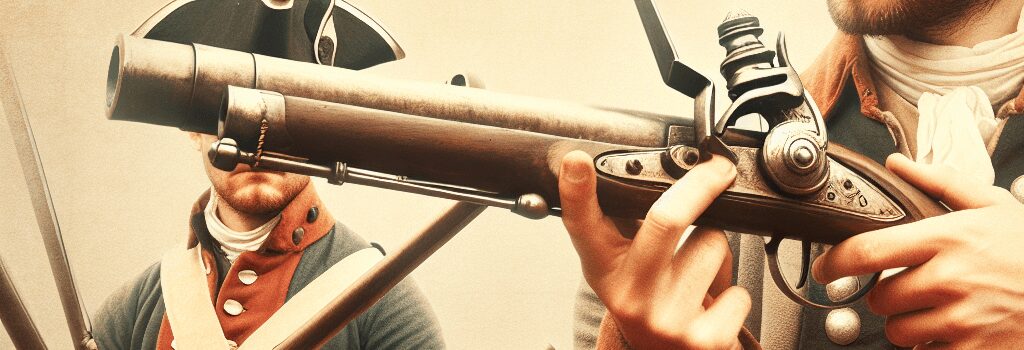Live Demonstrations Unveil the Technical Realities of Revolutionary War Weaponry

The American Revolutionary War was not simply a contest of bravery and battle tactics—it was also a crucible for technological innovation in weaponry. In a new NOVA documentary, expert historians, military weapons specialists, and reenactors have come together to simulate and test the performance of iconic 18th-century arms, ranging from the renowned Brown Bess musket to long rifles and even the pioneering submarine known as “The Turtle.”
Recreating the Past: The Technical Challenges
Reproducing Revolutionary War arms involves meticulous craftsmanship and state-of-the-art testing. Specialists have built highly accurate reproductions using contemporary forges and machining technologies while maintaining historic design fidelity. For the live demos, weapons like the Brown Bess musket and the long rifle were tested with modern ballistics gelatin and precision measurement tools. This allowed experts to validate accuracy, load-time, and impact force while leveraging 3D laser scanning and high-speed cameras—including the advanced Phantom Range camera system—to capture every fleeting moment of the gun’s discharge.
High-Speed Capture and Data Acquisition
Director Stuart Powell explained that using a high-speed camera system is akin to having a supercomputer on set. “We coordinate the camera’s 10-second burst with a meticulously planned firing schedule to record the live ballistics action. If the gun misfires or any technical hiccup occurs, the camera’s reboot time—about five minutes—means we risk losing precious data,” said Powell. The use of such high-speed imaging not only captures the instantaneous mechanics of 18th-century ignition but also provides a window into the progression of the flame, powder ignition, and musket recoil in slow-motion.
Examining Weapon Arsenal and Historical Tactics
This comprehensive documentary dives deep into several historical facets:
- Brown Bess vs. Long Rifles: The tests compare the Brown Bess musket of the British with the long rifles favored by the Continental Army. The musket’s faster reload times and ability to mount bayonets were critical compared to the rifle’s superior accuracy but slower rate of fire.
- Close-Combat Weaponry: Experiments also investigated the effectiveness of Native American tomahawks in close combat. While popular films often exaggerate their use as throwable weapons, modern throwing competitions and forensic tests have provided realistic parameters for their actual combat performance.
- Cannon Ballistics: Cannons were evaluated for their destructive capabilities against gabions and field fortifications. High-speed footage revealed exact impact angles and fragmentation patterns, giving experts new insights into siege warfare tactics during the Siege of Yorktown.
- The Turtle Submarine: The documentary also revisits the revolutionary design of David Bushnell’s Turtle, the first military submarine. Live demonstrations, including experiments in a hypoxia chamber, provided technical data on crew endurance in limited oxygen environments, despite some segments being cut for runtime constraints.
Technical Analysis and Expert Opinions
Military historian and weapons expert Joel Bohy, known for his work on Antiques Roadshow, played a critical role in the demonstrations. Bohy detailed the process of collecting and custom-building precise replicas: “I oversee a collection of over 14 different arms to ensure we cover the diversity of weapons used during the Revolution. Using modern forensic techniques, we integrated ballistics rods, lasers, and GIS mapping to validate historical confrontations by comparing shot impact deformations against rebuilt 18th-century house sections.” This cross-disciplinary approach not only corroborates historical texts but also opens new avenues in digital archaeology and battle reconstruction.
Archaeology Meets High-Tech: Mapping the Battlefield
One fascinating dimension of the research is the integration of archaeology with live-fire studies. By recording where each shot landed with metal detectors and tagging the fired ammunition, researchers are now able to map battlefield trajectories and even reinterpret the locations of key historical engagements. Advanced GIS mapping techniques have uncovered previously unconsidered aspects of battle dynamics, reshaping the conventional narratives of events like the Battle of Lexington.
Modern Implications and Technological Inspiration
Beyond recounting historic battles, the documentary stimulates a modern conversation about how technical innovation drives change in warfare and technology today. The challenges faced in replicating these aging arms—such as the reliance on imported barrels and flintlock mechanisms due to local manufacturing gaps—mirror modern issues in supply chain management in military hardware. Moreover, the work on the Turtle submarine has inspired current innovations in underwater robotics, with engineers exploring historically inspired designs to navigate restricted underwater environments. This cross-pollination of past and present highlights how limitations can spark creative engineering solutions.
Balancing Historical Accuracy with Drama
While the documentary focuses on live trials and precise data, it also dispels popular misconceptions. As Bohy explained, the oft-cited myth that a single type of firearm, like the rifle, clinched the Revolution is simplistic. Instead, the success of the colonial forces was due to a combination of timely French support, innovative arms adaptation, and strategic use of available technology. The documentary effectively communicates that American victory was built on a foundation of relentless training, tactical ingenuity, and continuous technical adaptation.
Conclusion: Technology, History, and the Pursuit of Accuracy
The NOVA documentary, now streaming on YouTube and available through PBS, not only revisits the strategic and technical innovations of the American Revolutionary War but also uses modern technology to bring unparalleled clarity to historical events. With expert commentary and precisely engineered experiments, the program offers a nuanced perspective on how the interplay of innovation, strategy, and manufacturing constraints shaped the outcomes of one of history’s most transformative conflicts.
Source: Ars Technica